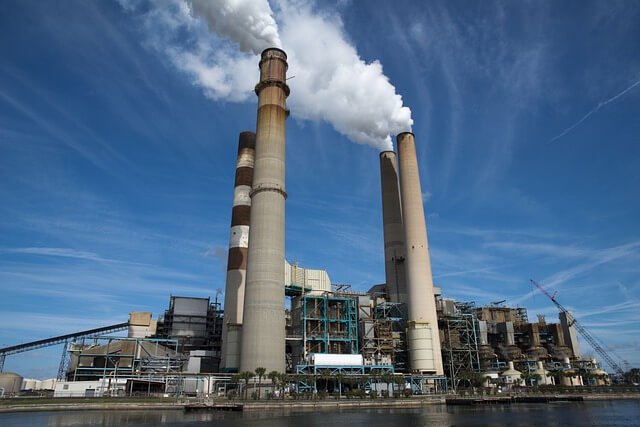
POWER GENERATION IN INDIA: INDUSTRY ANALYSIS
March 5, 2023
UNDERSTAND ABOUT SOLAR POWER PLANTS IN INDIA AND VARIOUS ENERGIES
March 5, 2023Thermal Power Plants are also known as Thermal Power Stations or Thermal Power Generating Plants. At the largest thermal power plant in india or station, heat energy is transformed into electric power or energy for household and commercial use. Steam-operated turbines convert heat into mechanical and then electric power during electricity production.
WORKING COMPONENTS OF THERMAL POWER PLANT
A thermal power plant uses multiple successive processes to produce electricity.
Fuel is transported by train from mines to a power plant’s fuel storage facility. The energy provided to the plant in bigger particles is broken down into tiny pieces before being injected into the boiler furnace.
Once inside the boiler, the fuel burns up and generates much heat.
The heat from the fuel’s combustion is transferred to the water in the boiler drum to produce high-pressure, high-temperature steam. In contrast, pure water, free of impurities and air, is introduced into the boiler drum.
Flue gases from boiler exhaust often have a high temperature, and if this heat is not used, it will result in numerous losses and decreased boiler efficiency.
Hence, this wasted heat is often recovered by heating the combustion air or the boiler water.
To collect dust particles and prevent air pollution, flue gases from chimneys can pass through a dust collector or a bag filter before being released into the atmosphere.
SOLAR ENERGY
Solar power and solar thermal energy systems can harness the heat and radiant light that the Sun emits.
Solar energy can produce heat, trigger chemical reactions, and generate electricity as a clean, renewable alternative to fossil fuels. Solar companies in india enable flexible large-scale construction and the storage of harvested energy.
The quantity of solar energy that could be used by the planet each day greatly outweighs its present and projected future energy needs.
RENEWABLE ENERGY
Natural resources that are replenished more quickly than they are consumed provide renewable energy. The sun and the wind are two examples of such sources that are constantly supplied. We have access to a wide variety of renewable energy sources.
On the other hand, it takes hundreds of millions of years to develop non-renewable fossil fuels like coal, oil, and gas. Fossil fuels release harmful greenhouse gases like carbon dioxide when they are used to provide energy.
Using fossil fuels results in more emissions than generating electricity from renewable sources. The transition to renewable energy from fossil fuels, which currently produce the most emissions, is essential to preventing climatic disasters.
Renewable energy sources currently cost less and provide three times as much employment as fossil fuels in most countries.
Regarding the attractiveness of countries for renewable energy in 2021, India is the third-largest energy consumer in the world.
WIND ENERGY
Wind power is produced by converting the kinetic energy of moving air into electrical energy. Modern wind turbines use the wind to propel their rotor blades, which convert kinetic energy into rotational energy. Electricity is generated by a generator connected to rotational energy through a shaft.
Since 2000, wind energy has expanded thanks to R&D, supporting laws, and declining costs.
ARE YOU LOOKING FOR A RENEWABLE ENERGY DEVELOPER? The largest developer in India is ALFA INFRA PROP PVT. LTD., thus your search is over.




